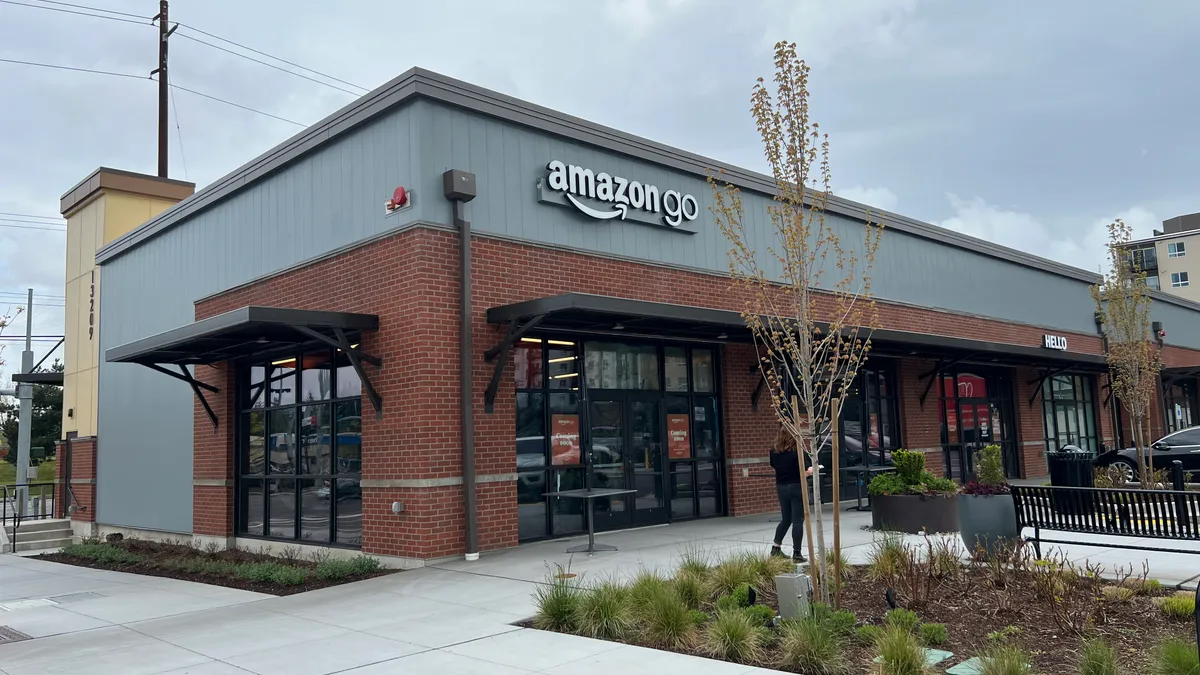Dive Brief:
-
Following a review of its operations, Amazon is laying off more employees in its retail business, CEO Andy Jassy told employees Wednesday. Jassy said he posted the news publicly after it was leaked.
-
In all, including layoffs confirmed in November, Amazon will “eliminate just over 18,000 roles,” primarily in its Amazon Stores, and People, Experience and Technology divisions, according to Jassy’s blog post.
-
“These changes will help us pursue our long-term opportunities with a stronger cost structure,” he said. Affected employees will receive separation payment, transitional health insurance benefits and external job placement support, he also said.
Dive Insight:
Amazon is uncharacteristically down-shifting. What is adding up to be a significant number of layoffs signals a correction to the company’s over-expansion as the pandemic helped fuel online sales growth. And it’s a sign that it may be entering a new era more focused on profits.
The November layoffs accompanied a pause in hiring at AWS, the company’s reliably profitable cloud division.
AWS experienced slowing growth in the second half of the year, a situation Brian Olsavsky, Amazon’s CFO, attributed to “the continuing impacts of broad-scale inflation, heightened fuel prices and rising energy costs,” during an Oct. 27 earnings call.
“We expect these impacts to persist throughout the fourth quarter,” Olsavsky said. “We're also taking actions to tighten our belt, including pausing hiring in certain businesses and winding down products and services where we believe our resources are better spent elsewhere.”
Amazon’s workforce reductions are part of a larger trend affecting the tech sector.
“Technology companies are following one another — and Wall Street — in trimming back their growth in employment,” J.P Gownder, VP and principal analyst at Forrester, told CIO Dive via email.
More than 1,000 tech companies, including Meta and Microsoft, laid off over 150,000 employees in 2022, according to Layoffs.fyi, even as demand for tech talent has remained high in other sectors. This may cushion the blow for technologists, but not for others experiencing layoffs.
“Many technology companies seem to have gotten too far over their skis in hiring over the past couple of years,” Gownder said.
In the last five years, the e-commerce giant added more than a million employees, with “a particularly frenzied expansion” during the pandemic, GlobalData Managing Director Neil Saunders said in emailed comments.
“All of this activity was predicated on the incorrect assumption that sales of Amazon’s products and services would continue to grow at a rapid clip,” he said. “With solid profits flowing, Amazon also became very bullish about expanding into new areas and was generous in staffing those divisions. However, it is now evident that the steep upward trajectory Amazon plotted over the pandemic years has come to an end.”
In his blog post, Jassy defended the steep cuts, and sought to assure investors that the company’s knack for disruption would continue despite them.
“These changes will help us pursue our long-term opportunities with a stronger cost structure; however, I’m also optimistic that we’ll be inventive, resourceful, and scrappy in this time when we’re not hiring expansively and eliminating some roles,” he said. “Companies that last a long time go through different phases.”
The cuts are prudent, but there is a risk to tightening the ship, Saunders warned.
“While the company has enough financial power to keep the lights on, a tighter environment means it will have to cut back investment on innovation,” he said. “Given that this has been the hallmark of Amazon’s success over the years, this is a worrying prospect.”















